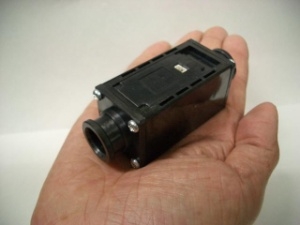 Microelectromechanical (MEMS) devices are shaping the competitive landscape in the global medical device industry. Several factors are behind the increasing demand for and innovation in MEMS devices in the medical industry: growing number of MEMS applications in healthcare; innovations, revolution and growth in the personal healthcare market, including wireless implants; and rising awareness and affordability of healthcare.
Microelectromechanical (MEMS) devices are shaping the competitive landscape in the global medical device industry. Several factors are behind the increasing demand for and innovation in MEMS devices in the medical industry: growing number of MEMS applications in healthcare; innovations, revolution and growth in the personal healthcare market, including wireless implants; and rising awareness and affordability of healthcare.
Participants and would-be entrants must understand the medical MEMS device market in order to compete in it. Global Information (GII) highlights three major reports that present the key issues driving and constraining market growth, in addition to probable solutions that can address emerging concerns in the medical MEMS market. Report forecasts provide a quantitative assessment of the market for companies to benchmark their performance and plan for future high growth areas, while qualitative analyses provide both an overarching view and a detailed breakdown of the MEMS market.
MEMS Devices in Global Medical Markets
The use of MEMS devices by different stakeholders is driving market growth by adding to the demand of devices from different medical market segments as discussed above. This is also indirectly encouraging for medical sector market players (particularly big ones) that have diverse customer bases composed of different stakeholders and diverse product portfolios (such as diagnostics, research, and medical devices), as they can capitalize on the MEMS market by leveraging their existing resources to some extent. Moreover, a diverse set of devices catering to the needs of different stakeholders encourages new entrants into sectors of their choice to complement or suit their capabilities and potentials.
Integrated devices and advancements in inertial sensors, such as products for human motion analysis, are meeting the needs of the modernized healthcare delivery model, especially for the elderly patient sector, by adding the element of prevention. An example of product innovation is microneedles for drug delivery, which is gaining popularity by offering a pain-free and enhanced, accurate method of drug delivery. Similarly, the diagnostic devices have significantly reduced the sample testing time from hours to a few minutes, thus significantly adding value to the healthcare delivery model from different perspectives such as time efficiency, convenience, patient satisfaction, and ease of operations.
Microfluidic/lab on chip (LOC) is considered a revolutionary technology for the life sciences and healthcare industry. This technology enables the integration of assay operations, such as sample pretreatment and sample preparation, on a single chip. This is radically changing the pharmaceutical and life-sciences research sector by changing the way procedures, such as DNA analysis and proteomics, are conducted.
The microfluidic/lab on chip (LOC) segment is expected to rise to 72% of the market share of MEMS devices by 2017. Major growth drivers of this sector are research tools, which are expected to achieve significant growth of CAGR 28.8% from 2012 to 2017. A surge from 2012 to 2017 in research applications, such as proteomics, genomics, and cellular analysis, is also expected to boost this sector.
In terms of applications, the macro segments of the market include pharmaceutical and life-sciences research, in vitro diagnostics, home healthcare, and medical devices. Among all of these applications, research is expected to grow at the highest CAGR of 28.3% from 2012 to 2017.
BioMEMS
Expected to triple in size over the next five years, the bioMEMS market is expected to grow from $1.9 billion in 2012 to $6.6 billion in 2018. Microsystem devices have applications in four key healthcare markets: pharmaceutical, in-vitro diagnostics, medical devices and medical home care. Microsystem devices have become increasingly visible in the healthcare market by serving as solutions adapted to the requirements of various applications. The usefulness of these devices is two-fold: they improve medical device performance for the patient; and secondly, they offer competitive advantages to system manufacturers. For example, the introduction of accelerometers in pacemakers has revolutionized the treatment of cardiac diseases.
BioMEMS devices examined in the report include: pressure sensors, silicon microphones, accelerometers, gyroscopes, optical MEMS and image sensors, microfluidic chips, microdispensers for drug delivery, flow meters, infrared temperature sensors, and emerging MEMS including RFID, strain sensors, and energy harvesting.
The Global MEMs Device, Equipment, and Materials Markets: Forecasts and Strategies for Vendors and Foundries
A significant portion of MEMS manufacturing technology has come from the IC industry. MEMS devices can be made using silicon wafers and the manufacturing process can incorporates semiconductor manufacturing processes such as sputtering, deposition, etching and lithography. This report analyzes the market for MEMS devices and the equipment and materials to make them.
This report provides forecasts for the following key MEMS device applications: ink jet head, pressure sensor, silicon microphone, accelerometer, gyroscope, MOEMS, Micro Display, Microfluidics, RF MEMS, Micro Fuel Cells, and more.



 The D6F-70 MEMS Flow Sensor is capable of measuring up to 70L/min- an improvement of 20L/min from the current model- all with a very high level of accuracy thanks to
The D6F-70 MEMS Flow Sensor is capable of measuring up to 70L/min- an improvement of 20L/min from the current model- all with a very high level of accuracy thanks to